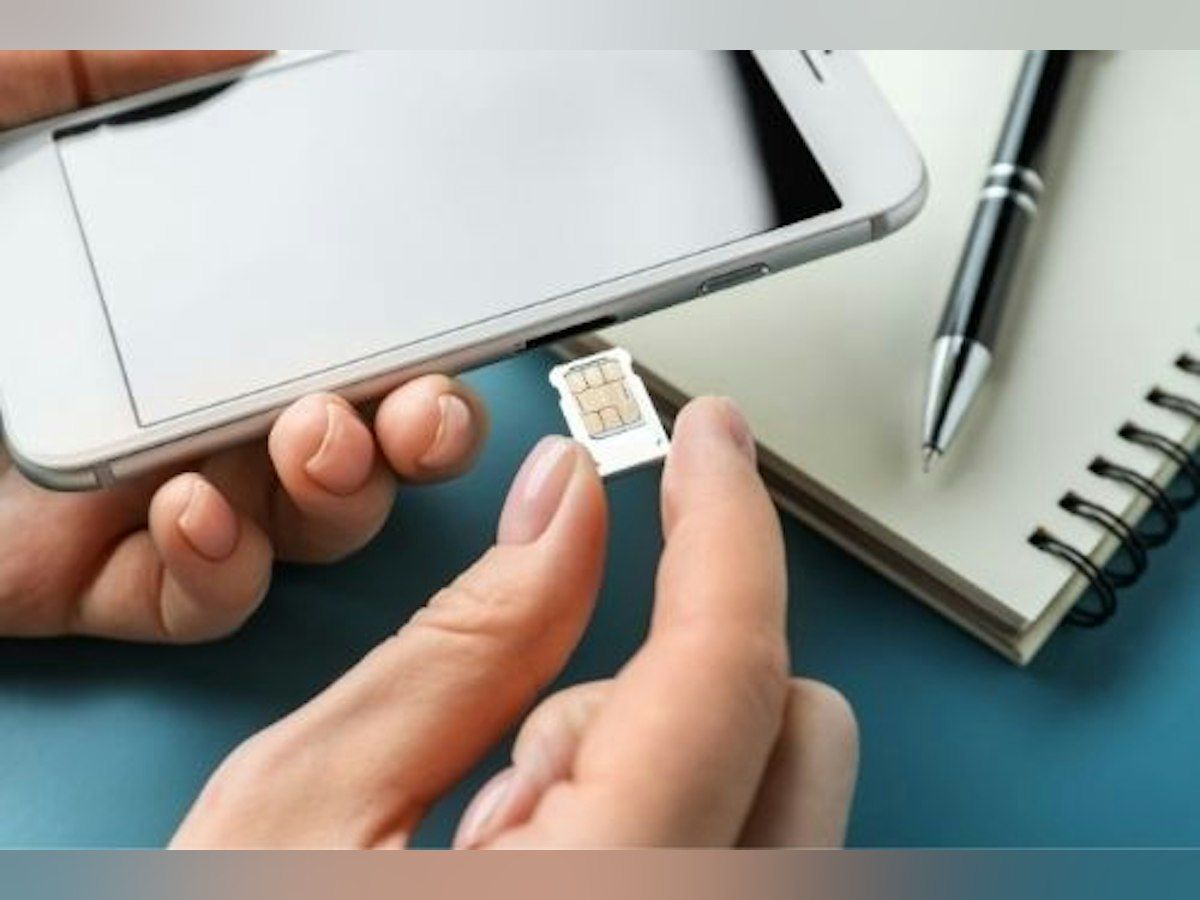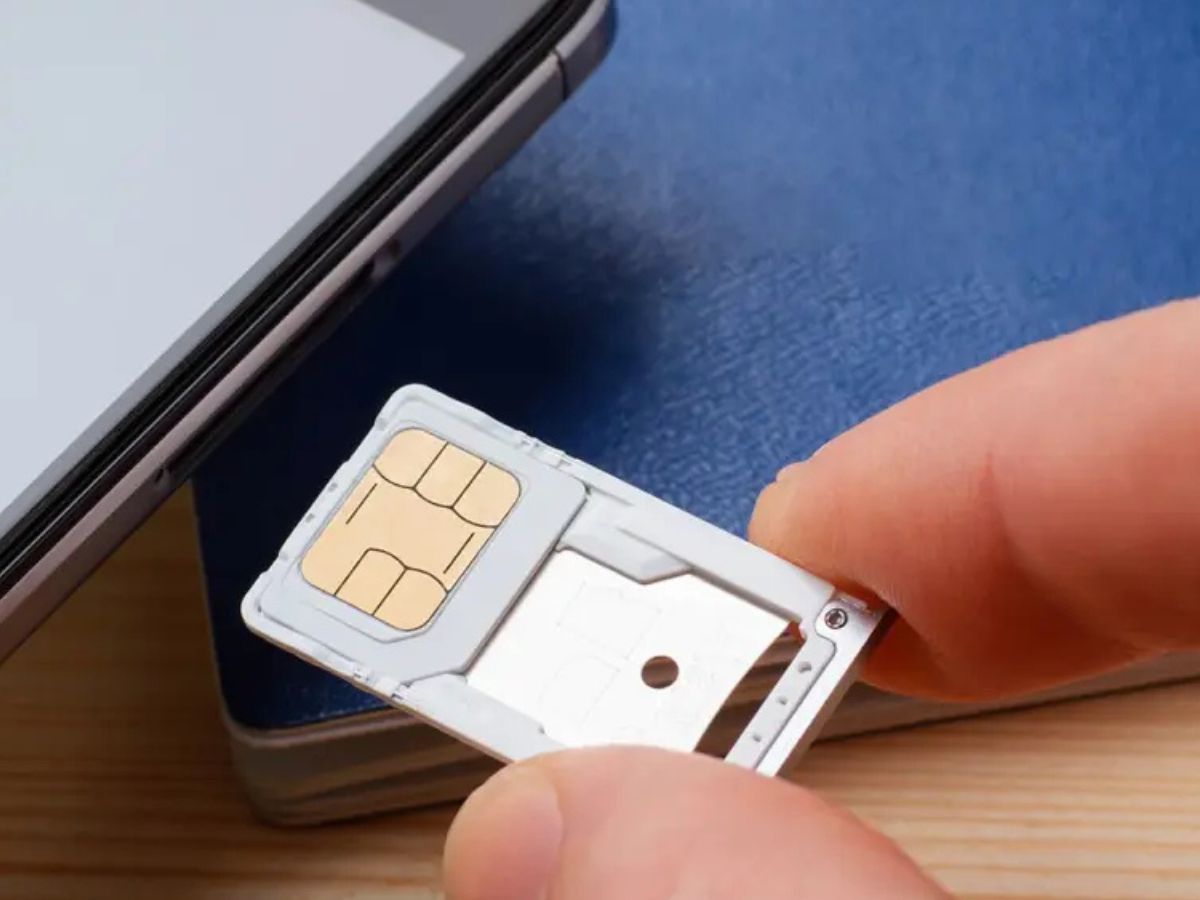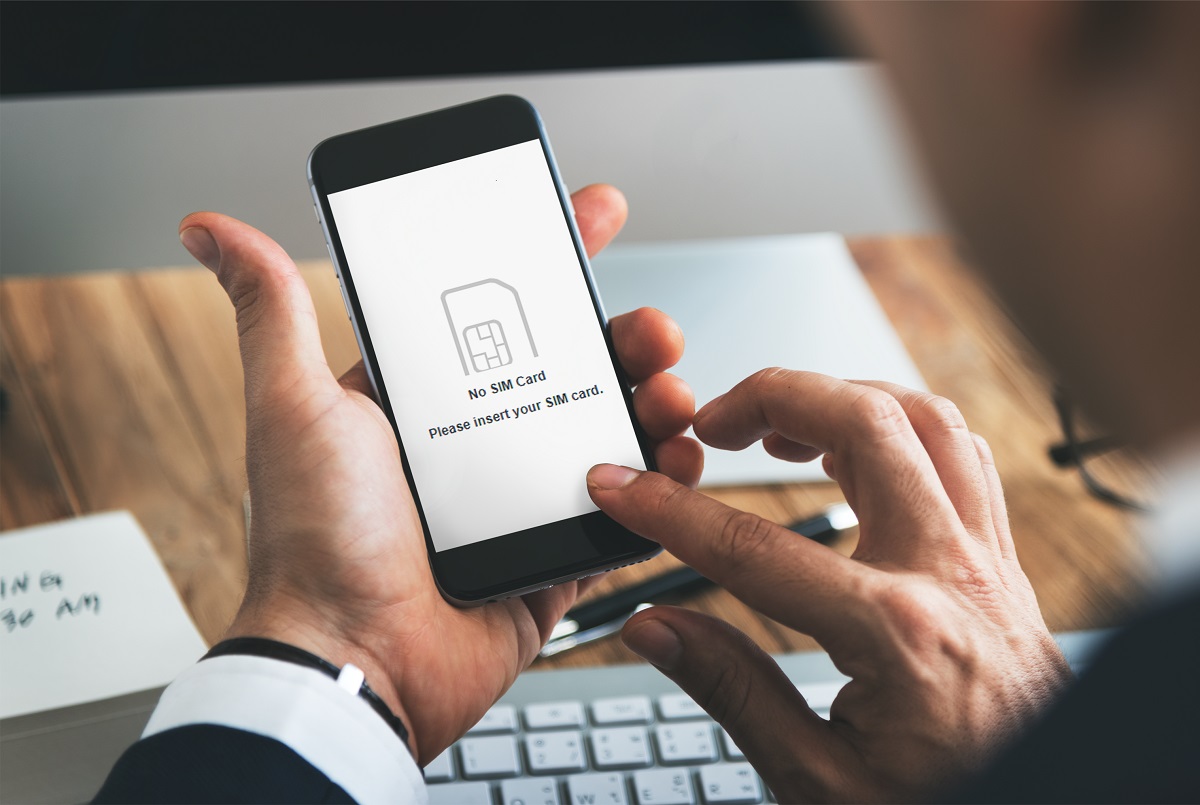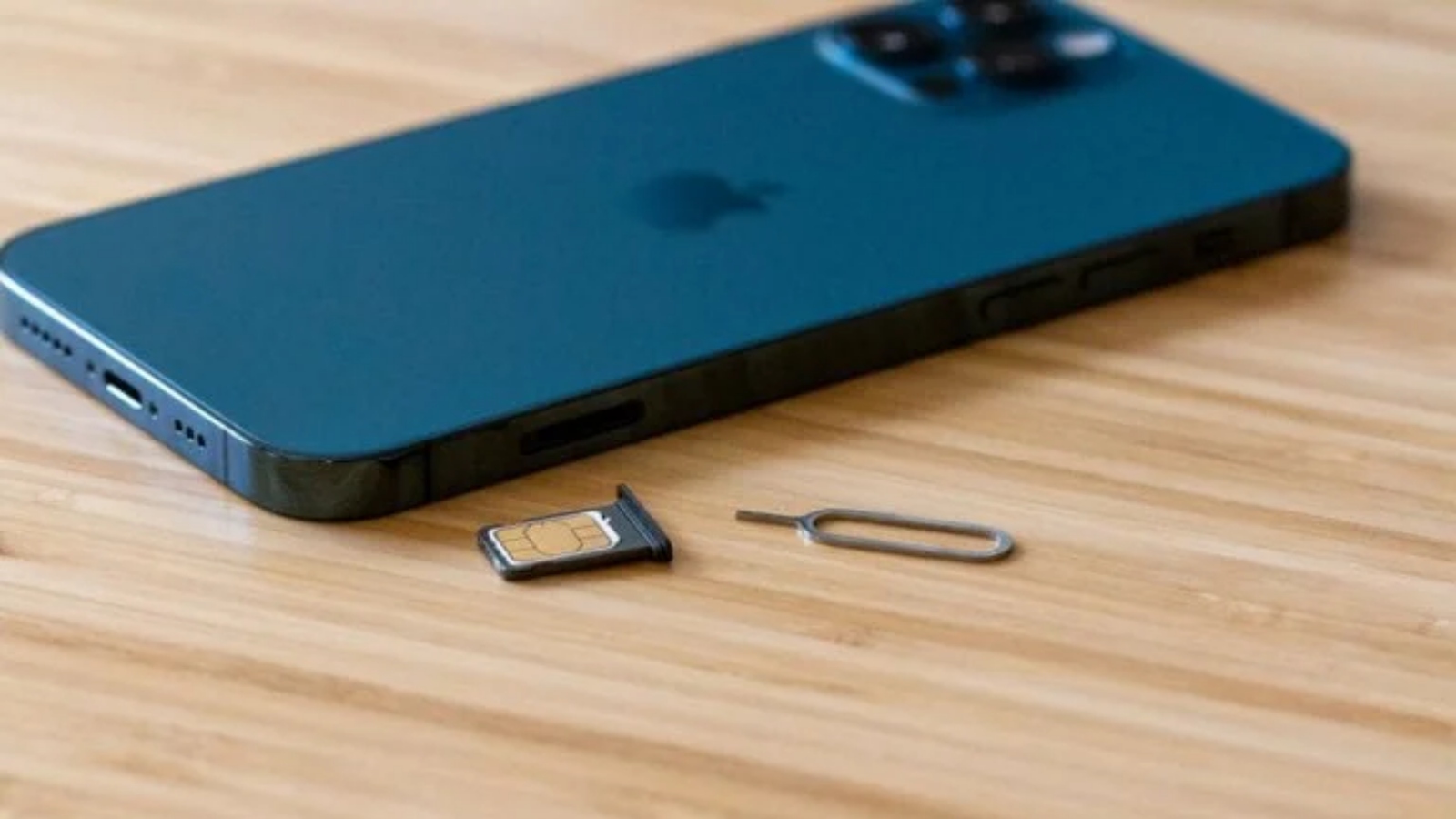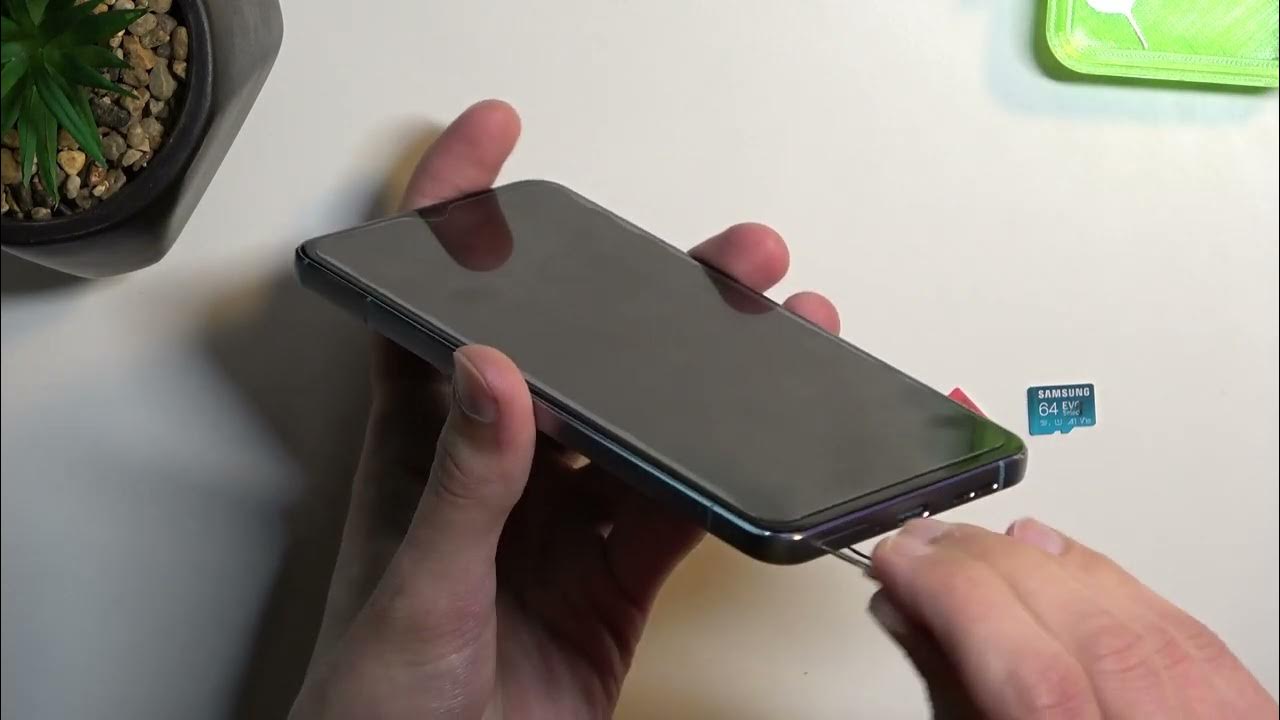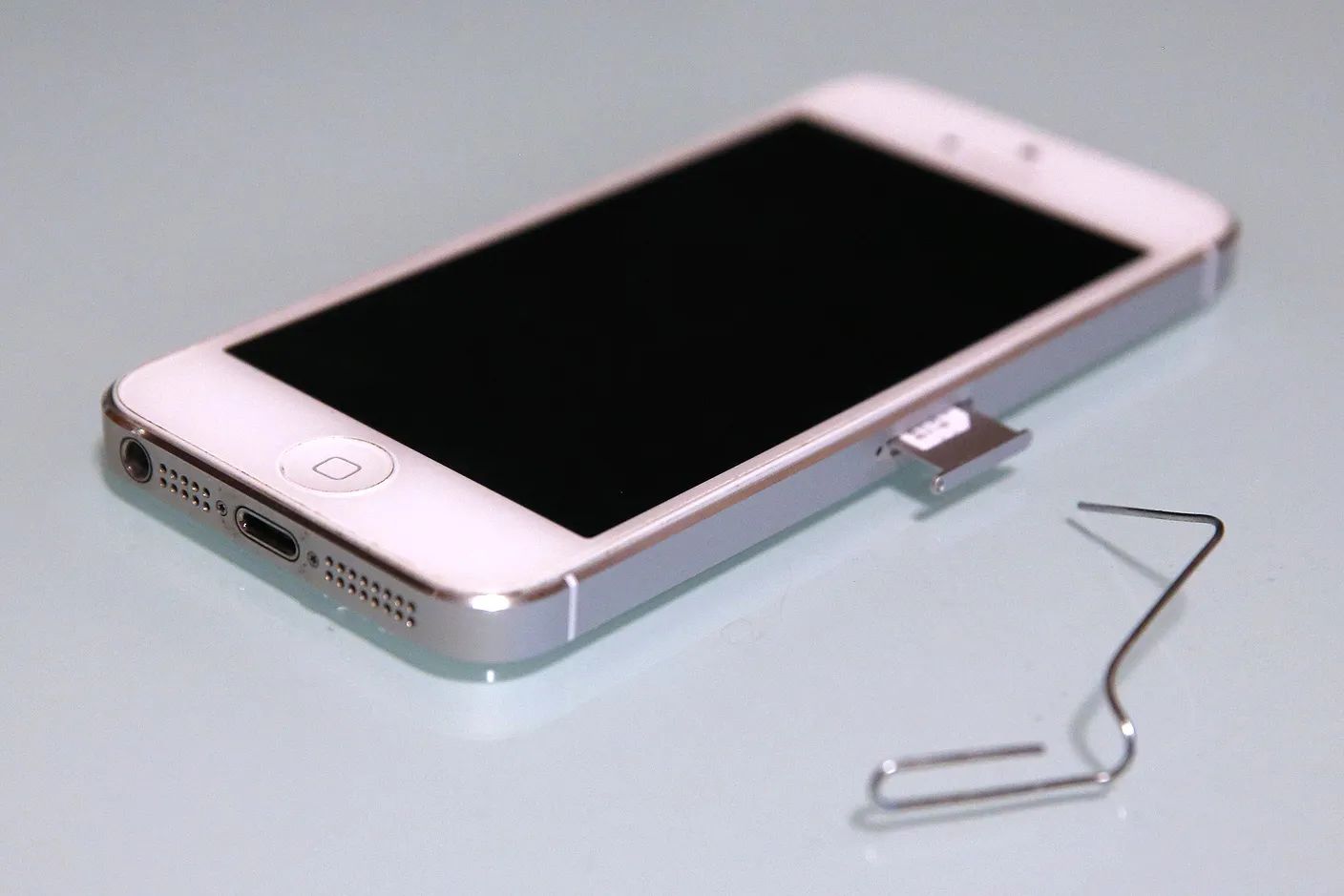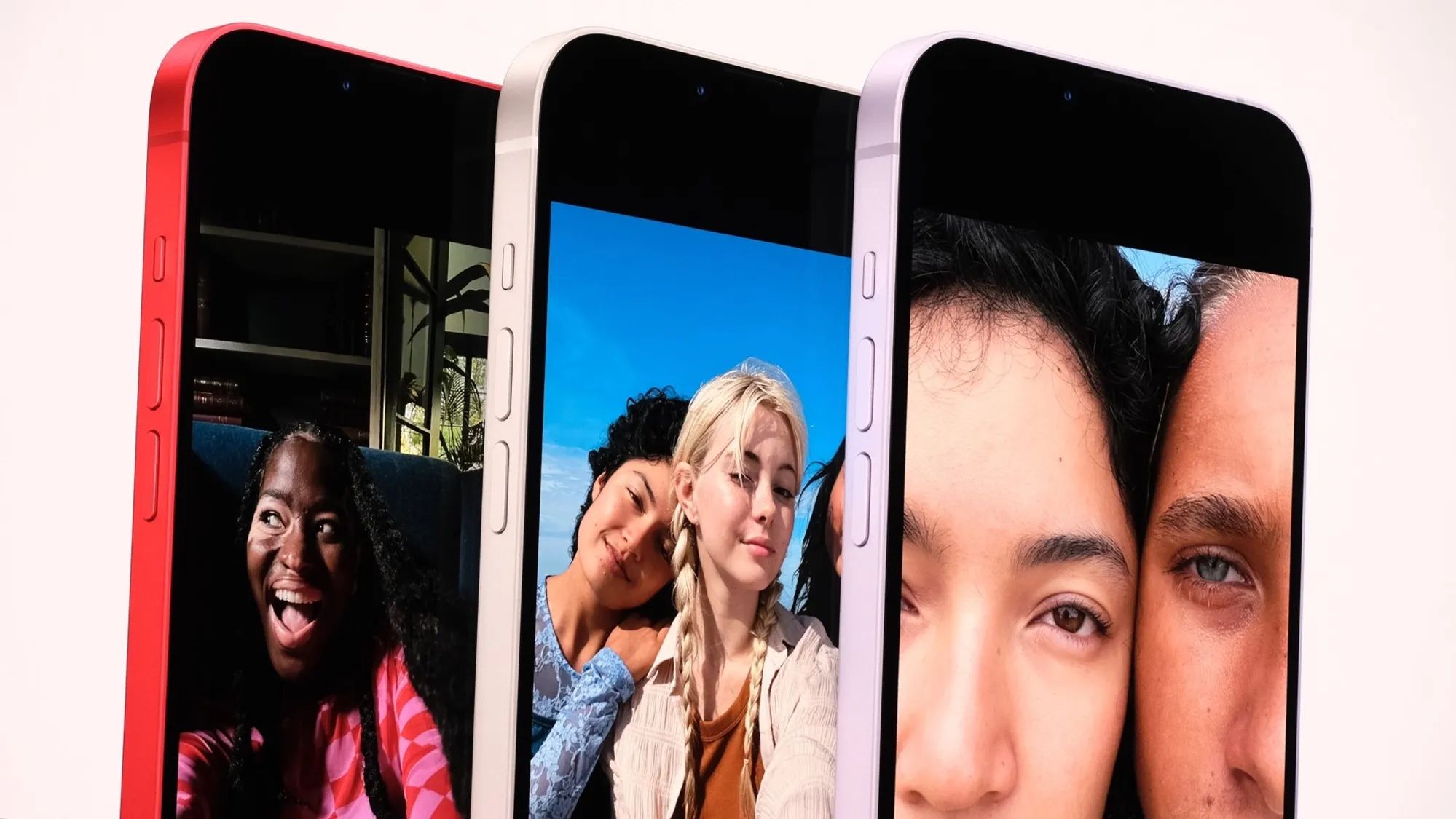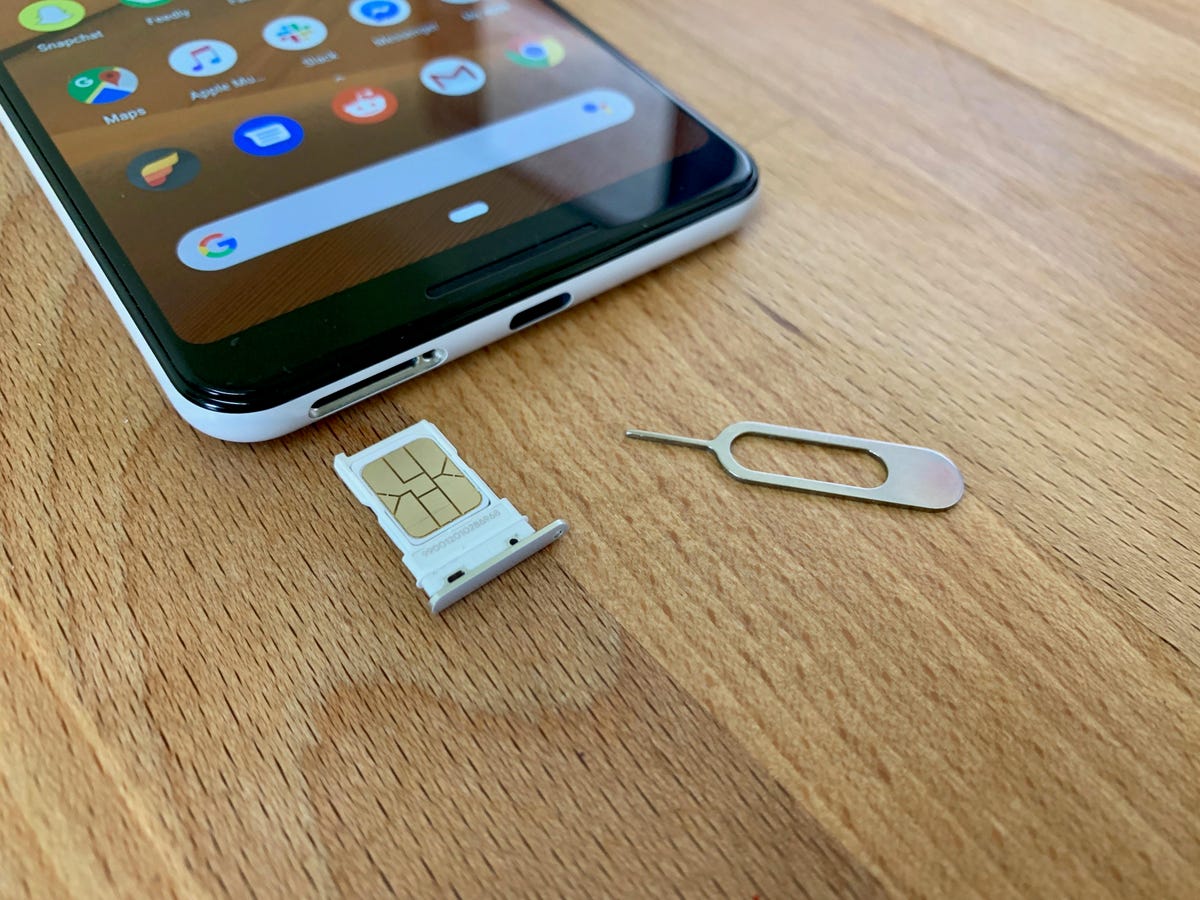Introduction
Welcome to the comprehensive guide on understanding the contents of an iPhone SIM card. In today's digital age, mobile devices have become an integral part of our lives, serving as our primary means of communication, entertainment, and productivity. At the heart of these devices lies the SIM card, a small yet powerful component that plays a crucial role in enabling cellular connectivity.
As we delve into the intricacies of an iPhone SIM card, it's essential to grasp the significance of this tiny but mighty piece of technology. Whether you're a tech enthusiast, a curious iPhone user, or someone seeking a deeper understanding of mobile devices, this guide aims to shed light on the contents and functionalities of an iPhone SIM card.
From exploring the types of SIM cards available to unraveling the data stored within them, this guide will equip you with the knowledge to navigate the world of SIM cards with confidence. Understanding the contents of an iPhone SIM card is not only informative but also empowers users to make informed decisions when managing their mobile connectivity.
So, join us on this enlightening journey as we unravel the mysteries of the iPhone SIM card, uncovering its inner workings and demystifying the data it holds. By the end of this guide, you'll have a comprehensive understanding of the contents of an iPhone SIM card, empowering you to make the most of this essential component of modern mobile technology. Let's embark on this enlightening exploration together!
What is a SIM Card?
A SIM card, short for Subscriber Identity Module, is a small, removable chip that is inserted into mobile devices, such as smartphones and tablets, to enable cellular connectivity. Serving as a unique identifier for the user and the mobile network, the SIM card plays a pivotal role in facilitating communication and data services.
At its core, a SIM card contains essential information that allows the mobile device to connect to the cellular network and authenticate the user's identity. This information includes the International Mobile Subscriber Identity (IMSI), a unique serial number that identifies the user within the mobile network, and the Integrated Circuit Card Identifier (ICCID), which uniquely identifies the SIM card itself.
SIM cards come in various form factors, including the standard SIM, micro-SIM, and nano-SIM, each designed to fit different types of mobile devices. The standard SIM, which was prevalent in earlier mobile phones, has since been succeeded by the smaller micro-SIM and the even more compact nano-SIM, catering to the evolving designs of modern smartphones.
One of the key functionalities of a SIM card is its ability to securely store personal information, such as contacts, text messages, and network-specific settings. This ensures that users can seamlessly transfer their mobile identity and data between devices, making it convenient to switch to a new phone without losing important information.
Moreover, SIM cards play a crucial role in authenticating users on the network, ensuring that only authorized individuals can access cellular services. This security feature is essential in safeguarding the user's identity and preventing unauthorized usage of mobile services.
In essence, a SIM card serves as the bridge between the mobile device and the cellular network, enabling users to make calls, send messages, and access mobile data. Its compact size belies its significance, as it remains an indispensable component in the realm of mobile communication, empowering users with seamless connectivity and personalized mobile experiences.
Types of SIM Cards
SIM cards come in various types and form factors, each tailored to accommodate the diverse range of mobile devices available in the market. Understanding the different types of SIM cards is essential for users, as it ensures compatibility with their specific devices and enables a seamless transition when upgrading or switching to a new phone.
-
Standard SIM: The standard SIM card, also known as the mini-SIM, was the prevailing form factor in earlier mobile phones. Measuring approximately 25mm x 15mm, it was the standard size for many years before advancements in mobile technology necessitated smaller and more compact designs.
-
Micro-SIM: With the evolution of smartphones and the quest for slimmer profiles, the micro-SIM emerged as a smaller alternative to the standard SIM. Measuring around 15mm x 12mm, the micro-SIM gained popularity with the introduction of devices that required a more space-efficient form factor.
-
Nano-SIM: The nano-SIM represents the latest standard in SIM card design, characterized by its diminutive size of approximately 12.3mm x 8.8mm. This ultra-compact form factor has become the norm in modern smartphones, offering a significant reduction in size compared to its predecessors.
-
Embedded SIM (eSIM): In recent years, the emergence of eSIM technology has revolutionized the concept of traditional SIM cards. Unlike physical SIM cards, eSIMs are embedded directly into the device, eliminating the need for a physical card. This digital SIM technology allows for remote provisioning and offers the flexibility of switching between mobile carriers without the need to physically swap SIM cards.
Understanding the distinctions between these SIM card types is crucial for consumers when selecting a mobile device or acquiring a new SIM card. While older devices may still utilize standard or micro-SIM cards, newer smartphones typically require nano-SIMs or may even support eSIM technology. This knowledge empowers users to make informed decisions when it comes to device compatibility and ensures a smooth transition when upgrading to the latest mobile technology.
As mobile devices continue to evolve, the adaptability and versatility of SIM card technology remain pivotal in enabling seamless connectivity and personalized mobile experiences. By staying abreast of the various SIM card types and their compatibility with different devices, users can navigate the ever-changing landscape of mobile technology with confidence and ease.
Contents of an iPhone SIM Card
The contents of an iPhone SIM card encompass crucial information and settings that facilitate seamless connectivity and enable personalized mobile experiences. When examining the contents of an iPhone SIM card, it's essential to delve into the specific data and functionalities it holds, empowering users to comprehend its inner workings.
-
Subscriber Identity: At the core of an iPhone SIM card lies the Subscriber Identity, which includes the International Mobile Subscriber Identity (IMSI) and the Integrated Circuit Card Identifier (ICCID). The IMSI serves as a unique identifier within the mobile network, allowing the iPhone to authenticate the user and establish connectivity. On the other hand, the ICCID uniquely identifies the SIM card itself, enabling the device to recognize and interact with the SIM card seamlessly.
-
Network-Specific Information: The SIM card stores network-specific information, including the Mobile Country Code (MCC) and Mobile Network Code (MNC), which are essential for identifying the mobile network the SIM card is associated with. Additionally, the SIM card contains the Service Provider Name (SPN), which displays the name of the network operator on the iPhone's interface, ensuring users are aware of the network they are connected to.
-
Personal Data: SIM cards also serve as repositories for personal data, such as contacts and text messages. This feature allows users to store and transfer their contacts and messages between devices, ensuring continuity and convenience when switching to a new iPhone. By housing this data on the SIM card, users can seamlessly carry their personal information with them, irrespective of the device they are using.
-
Security and Authentication: The SIM card plays a pivotal role in ensuring the security and authentication of the user on the mobile network. It stores authentication keys and algorithms that are utilized to verify the user's identity and authorize access to cellular services. This security feature is integral in safeguarding the user's identity and preventing unauthorized usage of mobile services.
Understanding the contents of an iPhone SIM card provides users with valuable insights into the intricacies of mobile connectivity and data management. By comprehending the data stored within the SIM card, users can make informed decisions when managing their mobile identity and transitioning between devices, ensuring a seamless and personalized mobile experience.
Understanding the Data Stored on an iPhone SIM Card
The data stored on an iPhone SIM card encompasses a wealth of information that plays a pivotal role in enabling seamless connectivity and personalized mobile experiences. Delving into the intricacies of this data unveils the inner workings of the SIM card, shedding light on its multifaceted functionalities and the significance of the information it holds.
Subscriber Identity
At the core of the data stored on an iPhone SIM card lies the Subscriber Identity, comprising the International Mobile Subscriber Identity (IMSI) and the Integrated Circuit Card Identifier (ICCID). The IMSI serves as a unique identifier within the mobile network, allowing the iPhone to authenticate the user and establish connectivity. This fundamental aspect of the SIM card's data is essential in ensuring secure and reliable access to cellular services.
Network-Specific Information
The SIM card houses network-specific information, including the Mobile Country Code (MCC) and Mobile Network Code (MNC), which are vital for identifying the mobile network associated with the SIM card. Additionally, the SIM card contains the Service Provider Name (SPN), displaying the name of the network operator on the iPhone's interface. This data ensures that users are informed about the network they are connected to, fostering transparency and clarity in their mobile connectivity.
Personal Data
In addition to serving as a repository for network-related information, SIM cards also store personal data, such as contacts and text messages. This feature enables users to seamlessly transfer their contacts and messages between devices, ensuring continuity and convenience when switching to a new iPhone. By housing this data on the SIM card, users can effortlessly carry their personal information with them, regardless of the device they are using, fostering a seamless transition and preserving vital personal connections.
Security and Authentication
The SIM card plays a crucial role in ensuring the security and authentication of users on the mobile network. It stores authentication keys and algorithms that are utilized to verify the user's identity and authorize access to cellular services. This robust security feature is integral in safeguarding the user's identity and preventing unauthorized usage of mobile services, instilling confidence and peace of mind in the users' mobile interactions.
Understanding the depth and diversity of the data stored on an iPhone SIM card illuminates the intricate mechanisms that underpin mobile connectivity. By comprehending the significance of this data, users can navigate the realm of mobile technology with clarity and confidence, harnessing the power of their SIM card to facilitate seamless communication, safeguard personal information, and unlock a world of personalized mobile experiences.
How to Access the Contents of an iPhone SIM Card
Accessing the contents of an iPhone SIM card involves navigating through the device's settings to unveil the valuable information stored within the SIM card. While the SIM card itself is physically located within the iPhone, accessing its contents primarily involves interacting with the device's software interface. Here's a step-by-step guide on how to access the contents of an iPhone SIM card:
-
Accessing SIM Card Information
- To access the contents of an iPhone SIM card, begin by unlocking the device and navigating to the "Settings" app, represented by the gear icon.
- Within the "Settings" menu, scroll down and select "Cellular" or "Mobile Data," depending on the iPhone's region and software version.
- Tap on "SIM PIN" or "SIM Card" to access the SIM card information. Here, users can view details such as the SIM card's phone number, ICCID, and other relevant information.
-
Viewing Network-Specific Information
- To view network-specific information stored on the SIM card, users can navigate to the "About" section within the iPhone's settings.
- Within the "About" section, select "Carrier" to view details about the network provider and the network signal strength. This provides insights into the network the iPhone is connected to and the quality of the cellular signal.
-
Managing Contacts and Messages
- While the SIM card stores contacts and messages, accessing and managing this data is typically done through the iPhone's native apps.
- To manage contacts, navigate to the "Contacts" app, where users can add, edit, or delete contacts stored on the SIM card or the device.
- Similarly, accessing and managing messages can be done through the "Messages" app, allowing users to view, send, and delete text messages stored on the SIM card.
-
Security and Authentication
- Accessing the security and authentication features of the SIM card is typically transparent to the user, as the iPhone seamlessly utilizes the SIM card's security mechanisms to authenticate the user on the network.
- Users can manage the SIM card's PIN and other security settings by accessing the "SIM PIN" or "SIM Card" section within the iPhone's settings, allowing them to configure security measures to protect the SIM card's contents.
By following these steps, users can effectively access and interact with the contents of an iPhone SIM card, gaining insights into the SIM card's information, managing personal data, and ensuring the security and authenticity of their mobile connectivity. This knowledge empowers users to leverage the full potential of their SIM card, fostering a seamless and personalized mobile experience.
Precautions and Considerations when Handling an iPhone SIM Card
When handling an iPhone SIM card, it is essential to exercise caution and adhere to certain considerations to ensure the integrity of the SIM card and the seamless functionality of the mobile device. Here are key precautions and considerations to bear in mind:
1. Gentle Handling:
When inserting or removing the SIM card from the iPhone, it is crucial to handle it with care. The SIM card is a delicate electronic component, and rough handling can lead to damage or misalignment, potentially impacting its functionality.
2. Avoiding Exposure to Extreme Conditions:
SIM cards are sensitive to extreme temperatures and moisture. It is advisable to keep the SIM card away from direct sunlight, excessive heat, or moisture-laden environments. Exposure to such conditions can compromise the integrity of the SIM card and lead to potential malfunctions.
3. Using Proper Tools:
When accessing the SIM card slot in the iPhone, it is important to use the designated SIM eject tool or a paperclip to ensure a safe and secure removal of the SIM card. Using improvised or sharp tools can result in damage to the SIM card slot or the SIM card itself.
4. Safeguarding Personal Information:
As SIM cards store personal data such as contacts and messages, it is imperative to safeguard this information. When handling the SIM card, be mindful of the personal data it contains and take precautions to prevent unauthorized access or loss of information.
5. Verifying Compatibility:
Before inserting a SIM card into an iPhone, it is essential to verify its compatibility with the device. Using an incompatible SIM card can lead to connectivity issues and may not be recognized by the iPhone, potentially causing inconvenience and service disruptions.
6. Secure Storage:
When the SIM card is not in use, it should be stored in a safe and dry location, away from direct exposure to light and moisture. Proper storage helps maintain the integrity of the SIM card and ensures that it remains in optimal condition for future use.
By adhering to these precautions and considerations, users can handle their iPhone SIM cards with confidence, ensuring the longevity and seamless functionality of the SIM card and the mobile device. Taking these proactive measures contributes to a secure and reliable mobile experience, allowing users to leverage the full potential of their iPhone's connectivity capabilities.
Conclusion
In conclusion, delving into the contents of an iPhone SIM card unveils a world of intricate functionalities and essential data that underpin the seamless connectivity and personalized mobile experiences we have come to rely on. From the fundamental subscriber identity information to the storage of personal data and the robust security and authentication mechanisms, the iPhone SIM card plays a pivotal role in shaping our mobile interactions.
Understanding the inner workings of the SIM card empowers users to navigate the realm of mobile technology with clarity and confidence. By comprehending the data stored within the SIM card, users can make informed decisions when managing their mobile identity and transitioning between devices, ensuring a seamless and personalized mobile experience.
As mobile technology continues to evolve, the adaptability and versatility of SIM card technology remain crucial in enabling seamless connectivity and unlocking a world of personalized mobile experiences. By staying informed about the various types of SIM cards and their compatibility with different devices, users can navigate the ever-changing landscape of mobile technology with ease.
Moreover, the precautions and considerations outlined for handling an iPhone SIM card serve as a guide for users to ensure the integrity and seamless functionality of their SIM cards and mobile devices. By exercising caution and safeguarding their SIM cards, users can maintain a secure and reliable mobile experience, leveraging the full potential of their iPhone's connectivity capabilities.
Ultimately, the contents of an iPhone SIM card encapsulate not just data, but the essence of our mobile identities and the gateway to seamless communication. By gaining insights into the inner workings of the SIM card, users can harness the power of this tiny yet mighty component to foster connectivity, safeguard personal information, and unlock a world of personalized mobile experiences.
As we continue to embrace the digital age and the ever-expanding capabilities of mobile technology, understanding the contents of an iPhone SIM card remains essential for users to navigate the intricacies of mobile connectivity with confidence and clarity. It is through this understanding that we can fully appreciate the significance of the SIM card in shaping our mobile experiences and empowering us to stay connected in an increasingly interconnected world.







